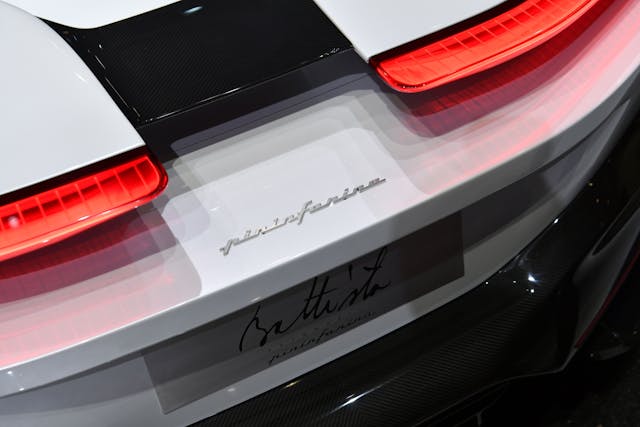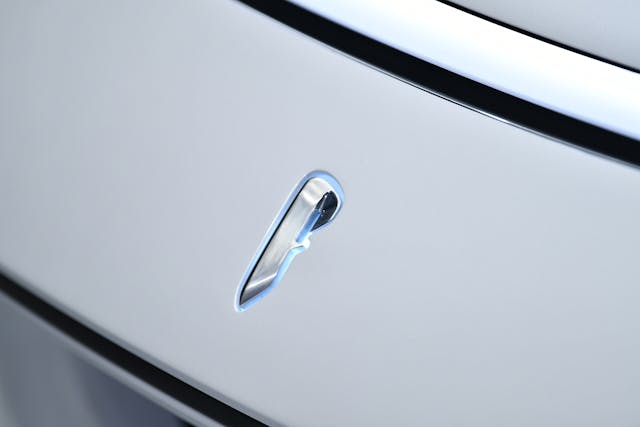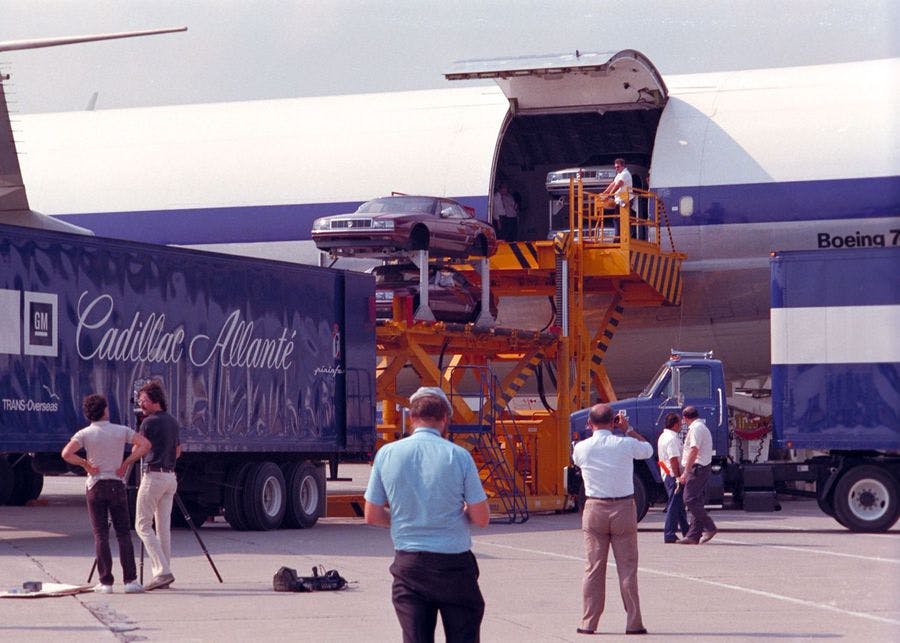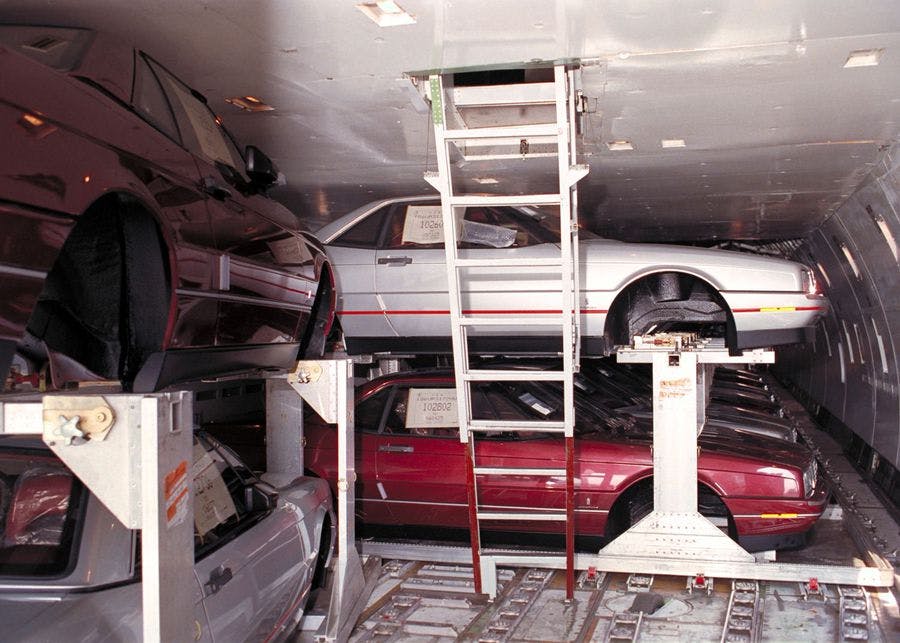Media | Articles
Can this man save Pininfarina?
At 90, the design house famous for creating some of the most beautiful Ferraris is at a crossroads. We sit down with scion Paolo Pininfarina to hear his plans for taking the family firm to 100.
“Italian design is light, lightness,” says Paolo Pininfarina as he walks us through the headquarters of the company his grandfather founded. “Simple, essential, elegant, novel. But, more than all, light.”
Paolo Pininfarina is the fourth member of his family to run the business founded by his grandfather; Paolo’s father, Sergio, and brother, Andrea, preceded him, before their deaths. And though the company has been majority-owned by the Indian industrial conglomerate Mahindra since 2015, the role and legacy of the Pininfarinas remain key as the firm, following a separation from Ferrari, faces the daunting challenge of expanding its reach beyond its roots in the auto industry.
Pininfarina S.p.A. turns 90 this year as perhaps the best known of the famed Italian carrozzeria, or coachbuilders. The company was founded by Battista “Pinin” Farina in 1930, near Turin, close to local automakers in the Terra dei Motori, Italy’s so-called “Motor Valley” in the industrial north of the country, where many car companies, from Fiat to Ferrari, were born. Before the war, the practice for many manufacturers was to deliver to customers a rolling chassis—engine, transmission, frame, wheels, suspension—and then allow the buyers to select either an off-the-shelf or custom body from one of the carrozzeria.

The company got its start creating bodies for luxury brands such as Hispano-Suiza, Alfa Romeo, Cadillac, Rolls-Royce, and Isotta Fraschini, as well as the more affordable local marques of Fiat and Lancia. But it really came into its own in the post-WWII era, when it developed a partnership with Ferrari, a union that resulted in Pininfarina essentially becoming the exclusive design vendor for the Prancing Horse brand. This collaboration resulted in some of the most famous Ferraris of the mid-20th century, including the 275, 330, 365, 308/328, and 288 GTO. With the aid of the films of Federico Fellini, the clothing of Oleg Cassini, and the furniture and architecture of Gio Ponti, it also helped to bring the notion of “Italian Design” to the world.
Marketplace
Buy and sell classics with confidence

“Pininfarina has always represented the best of a kind of timeless modernism, this kind of sporting elegance that maybe at the time doesn’t seem to be the most advanced, but as the years go on, it has this undeniable staying power,” says designer Jason Castriota, who is now global brand manager of Ford’s electric vehicles but got his start in the 2000s working for Pininfarina. “And I fully believe it stems from the Pininfarina family. There is an elegance to the family, in how they carry themselves, and they instilled in us a discipline of creating things that were Pininfarina. And that meant that it had to be beautiful and elegant, and it had to have staying power. It was just part of their company’s DNA.”

In later years, the designers at Pininfarina worked with dozens of car manufacturers and even expanded into outsourced automotive manufacturing, building low-volume models for Alfa Romeo, Mitsubishi, and others. The 1986–93 Cadillac Allanté luxury convertible is the one most people remember. Specially equipped Boeing 747s dubbed the “Allanté Air Bridge” flew GM parts 4500 miles to Turin, where they were assembled into car bodies at a new factory north of Turin built for the project. The trimmed and painted units were then packed 56 at a time into the planes for the journey back to Detroit for final assembly.
However, the brand took on too much capacity and fell on extremely hard times in the years preceding the 2008 financial crisis. Some of this strife seemed to be based in a conflict with its marquee client from Modena. “I started at Ferrari in 2002, and Ferrari didn’t have a design department then. I had to rely 100 percent on Pininfarina,” says Frank Stephenson, who was lead designer at Ferrari (and then McLaren) before starting his own design consultancy in 2017.
“Luca di Montezemolo, who was leading Ferrari at the time, was just not happy with the design quality from Pininfarina. That’s why they hired me,” says Stephenson. “They didn’t have anybody inside of Ferrari that could critique or judge or accept or deny a design from Pininfarina. Basically, they paid Pininfarina for a design, and they got back what Pininfarina gave them.” This was problematic for a number of reasons. “It seemed, for a period of time, they [Pininfarina] had slacked off a little bit and were concentrating on a lot of projects that left them a bit thin,” Stephenson says. “So we had to put the pressure on them to concentrate a bit more on making Ferraris look more like Ferraris.”

Unfortunately, at that moment, Ferrari was in the process of shifting its idea of what a Ferrari was meant to look like. The brand had made large investments in its Formula 1 team and technology, and Montezemolo wanted to see these cutting-edge advances reflected in the road cars. “So there was an interesting kind of tension,” Castriota recalls of that time, “between the desire to have what was always a Pininfarina Ferrari—something very beautiful and almost sensual, but always with some tension to it—and this more brutal, performance-oriented technology with a more aggressive aesthetic.”
This struggle lasted for years, and it eventually resulted in Ferrari bringing its design department in-house in 2012. The F12berlinetta, a two-seat front-engine GT built from 2012 to 2017, was the last production Ferrari to wear a Pininfarina badge. With a Prancing Horse-size gap in its portfolio, Pininfarina found itself foundering and required loans, debt restructurings, cash infusions, bailouts, and sales of increasingly larger shares of the business by the Pininfarina family. The company’s fiscal troubles did not truly abate until the 2015 purchase of a controlling stake by deep-pocketed Indian megalith Mahindra, which hopes to capitalize on the brand’s design, engineering, and manufacturing knowledge to help bring its own rudimentary vehicles into the modern era.

With Mahindra providing necessary funding, Pininfarina is now expanding into some new arenas, including, for the first time, developing its own car company. Automobili Pininfarina will focus on luxury and electric-powered vehicles. It has already unveiled its first planned production car, the $2.5 million Battista, of which only 150 will be made. Additional models, including a $250,000 SUV, a smaller crossover, a coupe, and a two-door convertible, will follow.
“This car, the Battista, is the future,” Paolo tells us, standing in front of the new car—and a selection of heritage vehicles—in the lobby of Pininfarina headquarters. “I’m reluctant to say that around these old masterpieces, but we need to focus on the future.”
Accolades have come in for the design of the first car, especially for its refinement and elegance in light of the more outré styling of other boutique electric super-car manufacturers like Rimac, Karma, or Lagonda. (“The Battista has that Pininfarina look, which is a bit of a Ferrari look,” says Stephenson.) And it appears possible to turn a profit in this elevated slice of the marketplace. James Glickenhaus, a film producer, car collector and builder, and owner of Scuderia Cameron Glickenhaus, which produces limited-edition, mid-six-figure super-sports cars, attests to this. “If we get to 300 cars a year, worldwide—which is certainly possible with the demand we’re seeing—we’ll be very successful,” he says. “And we’ll be able to keep developing product and keep racing and enjoying ourselves.”

But with Ferrari, its biggest design client, gone, and with the industry entering a moment of great consolidation and uncertainty, Pininfarina must stake out new territory in order to survive. It has already expanded into other fields of industrial design, including public transportation, construction equipment, architecture, vending machines, and even toilets. And though it seems, with even small-scale manufacturers like Bugatti or Lamborghini housing their own design departments, that automotive work might be drying up, Pininfarina is still exploring myriad other opportunities.
One growth area for the company is in Asia, where there is a host of new—or newish—automotive brands in emergent markets, especially in Korea, China, and India. These companies are seeking the imprimatur and status of a brand with some history and quality. “There are many car companies throughout the world that don’t really have a long history of designing beautiful cars and could use some help,” says Glickenhaus. “I think that’s an incredibly viable business they have, helping other manufacturers with design.”
Paolo Pininfarina endorses this assessment, slyly. “I like to say that we are designing for the world. And the world is different now, and the players are different, and the markets are different, and those kinds of partnerships with mature brands have faded a little,” he says. “But we are here, and we are continuing to work and develop partnerships with new players.”

Pininfarina feels that its participation may be of particular service, correctively, when a new company finds itself chasing eyeballs or clicks, simply to garner a reaction. “The Tesla truck, for example, is just a provocation,” Paolo says, citing a particularly egregious example. (Stephenson called it “an abomination.”) “It was designed just to go on the media, to break the media,” he says. “And it’s so different from my feeling of Tesla design, because Tesla design is quite conservative. They have a novel package, but the exterior is conventional. This [the Cybertruck] is not the right thing to develop coherent brand strategy. It’s a little bit out of the track. The truck is out of the track.”
This same type of service is offered by Pininfarina to more “mature” brands. However, the work typically occurs behind the scenes. “Where consultancies have found their space today is to be provocative sparring partners for internal design teams,” says Castriota. “And I think they offer tremendous value, because it’s often that when you read the page too close, you no longer see the words.”
A car company’s design essence could get muddled in conversations between internal design and marketing departments, in their efforts to follow trends or chase niche consumers. A brand will thus invite Pininfarina into its design process as an external set of for-hire eyes, to insert what Castriota calls “a redacted, pure version of the brand.”

“Personally, I am a strong believer in contamination like this,” Paolo says of the process of becoming a kind of design sparring partner. “Because there is a risk, when continuing to design internally—without the provocation, without the benchmark, of a design office. And the risk is that you become too conservative.”
The company thus acts as a safeguard against group-think or brand dilution. This is especially relevant in an era in which car designers move from job to job, and country to country, with alacrity, which runs the risk of watering down or universalizing brand specificity. “You see this massive kind of globalization of design, and I think car companies can very easily lose a bit of who they are and their own personal identity, their national identity,” says Castriota. “Pininfarina will kind of strip this back and say, ‘This is what we love about the brand as an outsider, about what it represents, and here’s our interpretation of that with a Pininfarina twist.’”


Another potential avenue is the creation of singular or small-batch vehicles based on existing platforms. This process harks back to the brand’s raison d’être, but it has come back into vogue. Witness the recent growth in extremely limited-edition seven- or eight-figure vehicles like the Ferrari Monza, Bentley Bacalar, Aston Martin V12 Speedster, and Bugatti Centodieci and La Voiture Noire.
James Glickenhaus commissioned just such a vehicle from Pininfarina back in the mid-2000s, based on the Ferrari Enzo hypercar. “I wanted to make it an homage to my P3/4, but Andrea [Pininfarina] convinced me that it should stand on its own and not simply be a replica,” Glickenhaus says. “And I think he incorporated a lot of design DNA from other great Ferrari race cars. The rear window is a modification of the 512S. There’s some Dino Competitzione lines in it.”
Glickenhaus purportedly spent $4 million on the car, which was well received when it was shown at the Pebble Beach Concours in 2006. This was especially true in contrast to the rather technical, F1-inspired appearance of the Enzo on which it was based. “I’m personally sad that fewer people did not follow in my footsteps,” Glickenhaus says of his one-off commission, which he calls the Ferrari P4/5 by Pininfarina. “I think part of the reason is that when Ferrari saw the incredible response to it, they took all their special projects completely in-house—frankly, because they want to keep all the money.”
With the advent of the integrated battery pack and motors that make up the “skateboard” that underpins many electric cars, as well as technology like 3D printing, the creation of new, bespoke bodies could become simplified and turn into a growth industry, accessible to consumers with less than seven figures to spend. However Pininfarina’s leaders decide to focus their efforts, for now, the brand is attempting to remain optimistic about its uncertain future while projecting an air of refinement and beauty onto every consumer product that it touches.
“What is the best project for Pininfarina?” Paolo says at the end of our discussion. “The next one.”
















